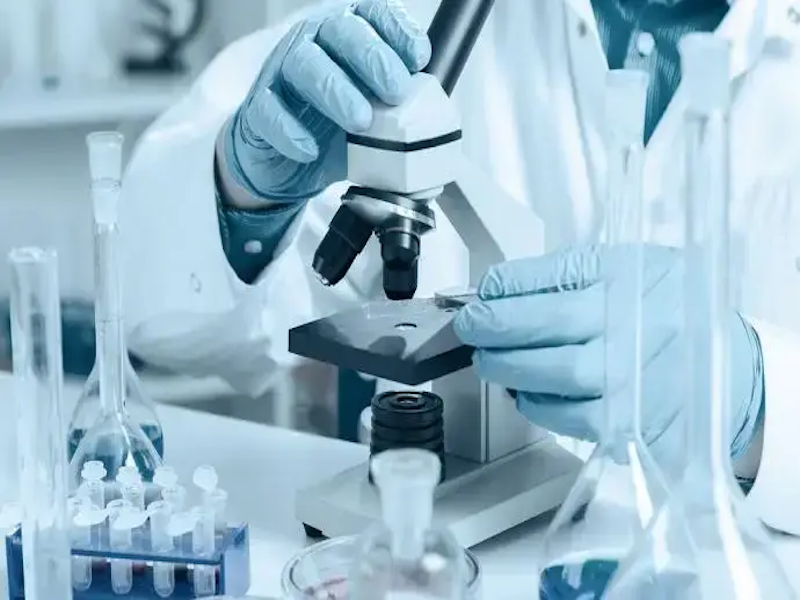
Characteristics and Applications of Amino Acid Surfactants
2024-07-25 20:00Amino acid surfactants are amino acid (such as glutamic acid, glycine, etc.) salts (sodium salt, potassium salt, triethanolamine) of coconut oil (or laurel oil or palm oil) with foaming and decontamination ability. Amino acid surfactants are a new type of green and environmentally friendly surfactants from renewable biomass sources, and are upgraded products of traditional surfactants. Amino acid surfactants not only have a wide range of biomass raw materials, low toxicity and side effects, mild performance, low irritation and good biodegradability, and green production processes, but also have good emulsification, wetting, solubilization, dispersion, foaming and other properties that are currently highly sought after by people. Weakly acidic amino acid surfactants have a pH value close to that of human skin, and amino acids are the basic substances that make up proteins, so they are gentle and skin-friendly, and can be used safely by sensitive skin.
Common sodium lauroyl sarcosinate is a light yellow liquid with a content of 30% and a white solid powder with a content of 95%, with a special smell. It is less irritating to the skin and has a weak degreasing effect. It is relatively stable to acid, heat, and alkali, and has excellent foaming properties, making it suitable as a foaming agent for toothpaste and shampoo.

Common glutamates are 30% sodium lauroyl glutamate, potassium lauroyl glutamate, sodium cocoyl glutamate liquids, and 95% sodium lauroyl glutamate, sodium cocoyl glutamate, sodium myristoyl glutamate solid powders. Common sodium cocoylaminopropionate on the market is a 30% liquid. It is based on natural raw materials, has extremely mild properties, strong resistance to hard water, is easily biodegradable, has no impact on the environment, has rich foam, is stable and elastic, and is a good cleanser for facial cleansing products, bath products, and baby cleansing products.
Common methyl taurine is 30% sodium cocoyl methyl taurate and sodium cocoyl methyl taurate taurate liquids. It has better foaming and foam stability in a large pH range. It is a mild cleansing ingredient with extremely low skin irritation, which brings moisturizing feeling to hair and scalp.
Common glycinates are 30% sodium cocoyl glycinate and potassium cocoyl glycinate liquids, and 95% sodium cocoyl glycinate and potassium cocoyl glycinate solid powders. Sodium cocoyl glycinate is the amino acid surfactant with the richest foam. Its foam richness is similar to that of potassium laurate. It has a water-passing feeling similar to that of soap base, but is not tight. It can be easily added to the AES surfactant system to enhance the water-passing feeling while reducing irritation.
Features
1. Good surface activity: Similar to other traditional surfactants, amino acid surfactants have good emulsification, wetting, solubilization, dispersion, foaming and other properties. According to the study, the anti-hard water performance of 0.05% mass fraction of sodium cocoyl methyl taurate is almost the same as the foam height under 1500 mg/Kg hard water conditions and pure water conditions, both of which are about 1700 mm.
2. Environmental protection, health and safety: Amino acid surfactants have excellent biodegradability, biocompatibility, high safety and other excellent properties. They can be decomposed into fatty acids and amino acids by enzymes in the human body. Researchers conducted subacute tests, chronic toxicity tests, mucosal irritation tests on mice and rabbits. The results showed that N-acyl amino acid sodium is less irritating than sodium dodecyl sulfate and safer.
3. Strong antibacterial ability: Due to the presence of hydroxyl groups or unsaturated bonds in the acyl chain, amino acid surfactants have bactericidal effects, and the antibacterial properties increase with the increase of hydroxyl groups and unsaturation. Studies have shown the antibacterial properties of N-acyl amino acid surfactants against Staphylococcus aureus, Pseudomonas aeruginosa and Escherichia coli, and investigated the effect of pH on antibacterial properties. The results showed that N-acyl amino acid surfactants have good antibacterial properties against these three bacteria. When pH>6, the antibacterial activity decreases.
Application value
Application in daily chemical productsAmino acid surfactants have good wettability, foaming, antibacterial, anti-corrosion, antistatic and other characteristics. They are non-toxic and harmless, mild to the skin, and the degradation products are amino acids and fatty acids, which have little impact on the environment. They have good compatibility with other surfactants and can be widely used in cosmetic products such as facial cleansers, shower gels, and shampoos. Amino acid green daily chemical products with amino acids as the main cleaning agent have now been formed. For example, in toothpaste in the field of oral care, the foaming agent fatty acyl amino acid surfactant has the effect of inhibiting lactic acid bacteria that convert glucose into lactic acid, and can play a good cleaning effect and freshen breath. Other literature reports that adding surfactants such as potassium lauroyl glutamate and sodium cocoyl glutamate to detergent formulas not only does not irritate the skin, but also maintains the activity of enzymes in the detergent. When purchasing daily, you can judge whether it is an amino acid detergent by the full ingredient list. For example, there are two common facial cleansers on the market: soap-based type and amino acid surfactant type. The most typical difference is that soap-based facial cleansers have a high pH value and are alkaline, with a strong degreasing effect. You may feel tight after washing. Their common ingredients are fatty acids and alkaline agents, such as lauric acid + potassium hydroxide. Amino acid-based facial cleansers may contain lauroyl glycinate. Return to Sohu to see more
